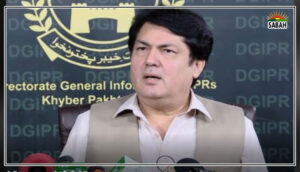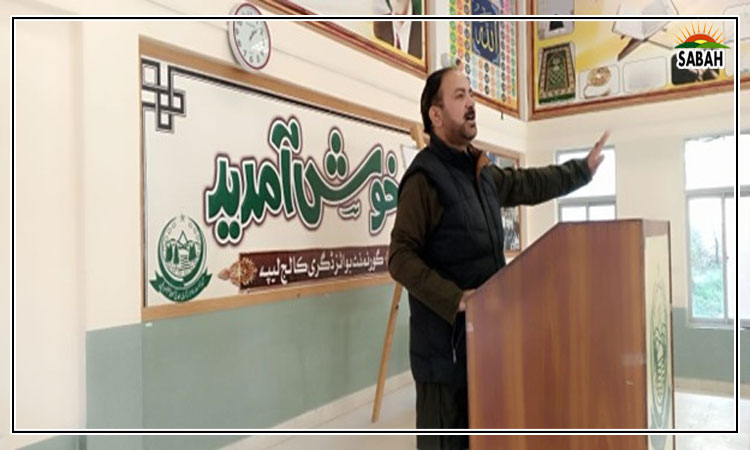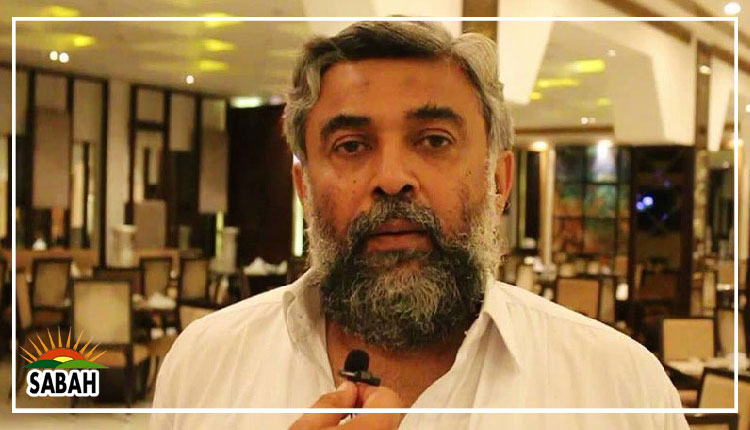Acclimatising in 100 days…Ali Tauqeer Sheikh
THE fragility of the political system has made Pakistan extremely averse to reforms. There is universal consensus that the system needs a thorough overhaul.
Any hint of change is checkmated by entrenched interest groups. Result: successive governments have avoided clear decisions and the necessary speed for transformative actions. The formation of new governments in Islamabad and the provinces has provided a long-awaited opportunity for coordinated, speedy, and decisive institutional reforms for climate resilience that can help bridge the trust gap between the state and citizens.
In fact, at one level, the country is already committed to IMF-supported reforms for tight monetary policy and accelerating structural reforms to build climate resilience, strengthen governance, and improve the business environment. This is both necessary and unavoidable, but not a substitute for internally driven consensus on structural reforms for an inclusive, low-carbon and climate-resilient development.
Announcing targets for the first 100 days in office is a common practice in both the parliamentary and presidential systems. The first 100 days provide leaders a crucial opportunity to set the tone for their tenure and build national and international credibility, outline priorities, and create a roadmap for future initiatives.
This tradition is aimed at demonstrating leadership capacity to create consensus, optimism, and momentum. These early decisions help them self-define success, establish clear priorities, ensure quick wins, solidify their coalitions, and generate public support for their programmes.
The concept of the first 100-days originated in Franklin D. Roosevelts presidency in the US to fix a broken financial system. He initiated significant changes in a short period of time after taking office, including the New Deal that took his country out of the economic downturn.
Since then, the first 100 days of the new government have assumed importance in setting specific targets in the American presidential system. This practice has since helped several administrations create priorities for action. American presidents now often use executive orders to set their agendas and influence congressional legislation and the countrys power politics.
There are several lessons that the current leaders can draw from Imran Khans experience.
In the British parliamentary democracy, on the other hand, the new prime minister typically uses the first 100 days to set the policy direction, instead of setting specific targets like his American counterparts. Cabinet members announce their sectoral policies and priorities.
In both instances, the incumbents use the first 100 days to draw the fault lines of their politics and politico-ideological alignments. In Pakistans hybrid political system there is probably something in each system to draw upon by setting targets as well as policy direction.
The goals of the first-100-days plan can vary depending on a leaders priorities. Imran Khan was the first prime minister in Pakistan who committed to ambitious targets for his first 100 days in office. He did not fully grasp the political economy of reforming the system. There were several additional contextual reasons for his failure, including a cluttered agenda, conflicting messages, lack of acumen and coordination among his cabinet colleagues, and difficulties in implementation in an otherwise lethargic system marked by poor political and economic management.
There are several lessons that the current political leaders can draw from Imran Khans experience for their 100-day agendas. The Sehat Card was Imran Khans signature initiative that captured the imagination of the poor. But he failed to build a national consensus. His opponents in the PML-N and PPP saw it as flawed and were quick to undo it rather than refining and continuing with it as they had done with the Benazir Income Support Programme.
Analyses have shown how, in comparison, Narendra Modis first 100 days as prime minister in India demonstrated caution and a combination of bold economic strategies, foreign policy, and social welfare initiatives. Unlike his Pakistani counterparts, he adopted a strategic approach to governance.
The economic strategy was based on three elements: i) kick-starting mining and manufacturing, ii) expediting project approvals by dismantling the planning commission, and iii) Jan Dhan Yojana his signature peoples wealth scheme. The last one was aimed at providing access to such financial services as banking, remittances, credit, insurance, and pensions.
Modis expanded affordable access to financial services included opening bank accounts with zero balance, providing debit cards with built-in accident insurance, offering an overdraft facility for Aadhaar-linked (Indian equivalent of CNIC) accounts and providing life insurance cover to users.
It is estimated that over 518 million users benefited, that is more than twice the total population of Pakistan. Collectively, they generated several billions in beneficiary accounts. This is a stunning example of how the 100-day agenda can unleash financial inclusion and empower men and women across urban and rural landscapes who were previously excluded from the mainstream financial system.
Nothing lifts people from poverty and climate vulnerability and adds to their economic productivity more than asset formation and financial access. We have seen this repeatedly in Pakistan from rural support programmes, Kashf, Akhuwat and several others.
This chessboard helped Modi consolidate his power as these reforms gained momentum towards the end of his first term in office. While the new government in Pakistan will face countless challenges such as the complexities of coalition governance, economic constraints, financial crises and social backlash, setting targets for the first 100 days remains a valuable practice to drive early progress and demonstrate leadership. Can the new government show a vision for a signature initiative?
Slow economic growth, a dire financial situation, frequent climate disasters, and ambiguities on the respective roles and responsibilities of the federation and provinces have all increased the need to bring structural reforms forward on the political agenda.
Finally, efforts to build up climate change adaptation capacity and resilience are critical. This includes, as already agreed with the IMF, implementation of the National Adaptation Plan that focuses on six priority sectors; realigning the existing PSDP portfolio with NAP objectives; carrying out a costing exercise for new projects; and embedding climate considerations in policy planning documents. Additionally, Pakistan has already committed to implementing institutional reforms under the IMFs Climate-Public Investment Management Assessment.
While the country is expecting a New Deal, the new government leaders cannot bury their heads in the sand like ostriches for more than 100 days. This would lead to political asphyxiation.
Courtesy Dawn












